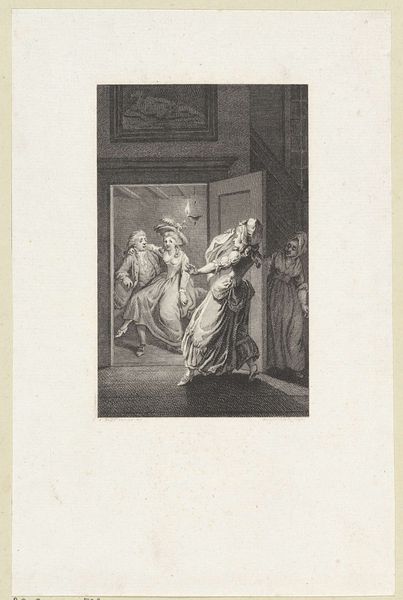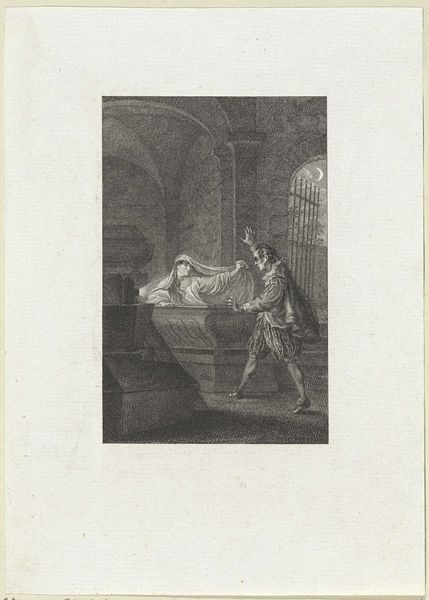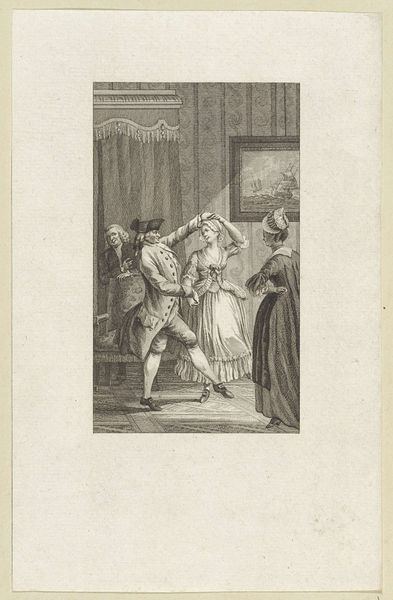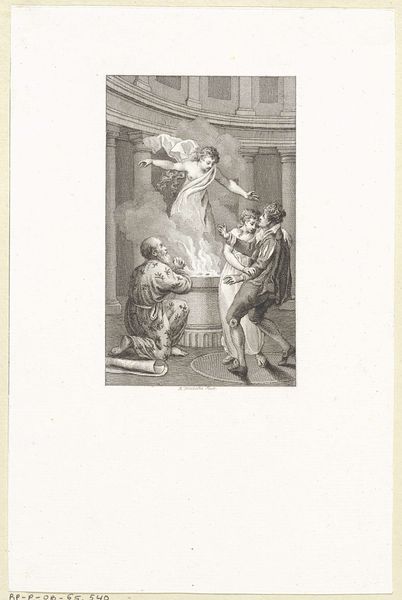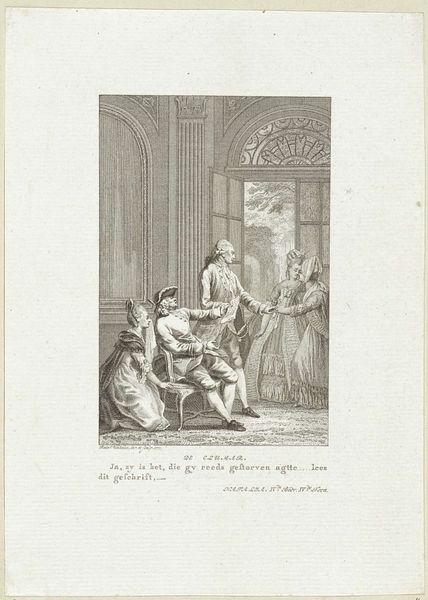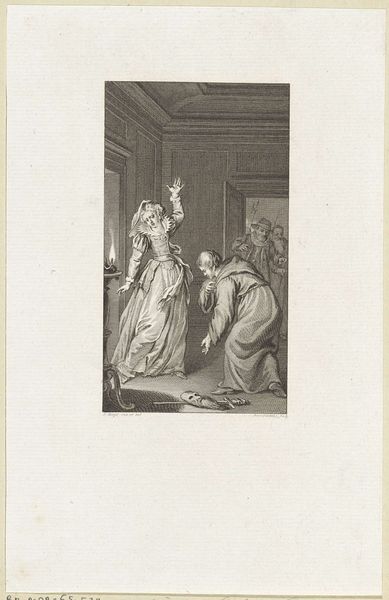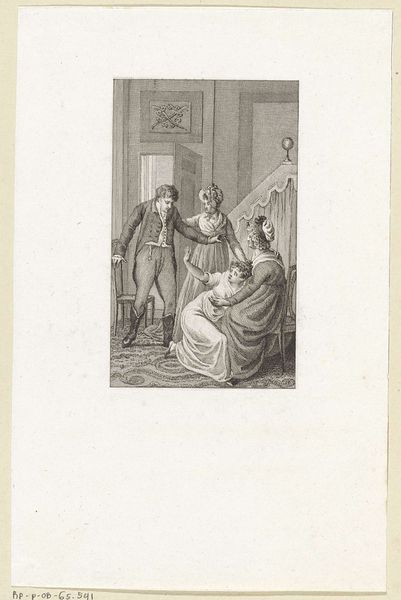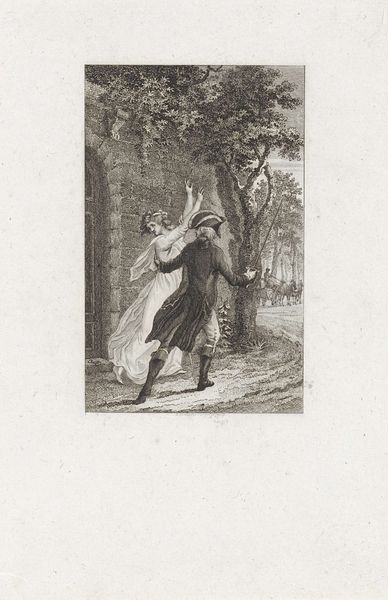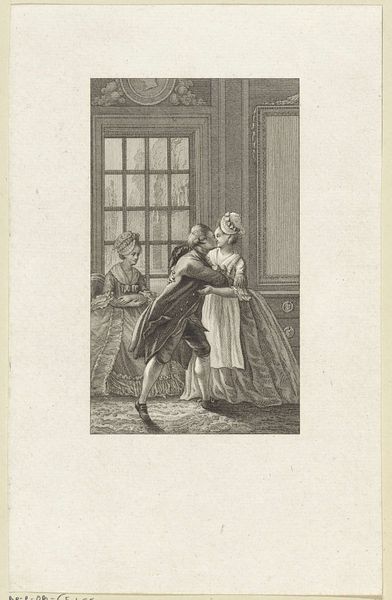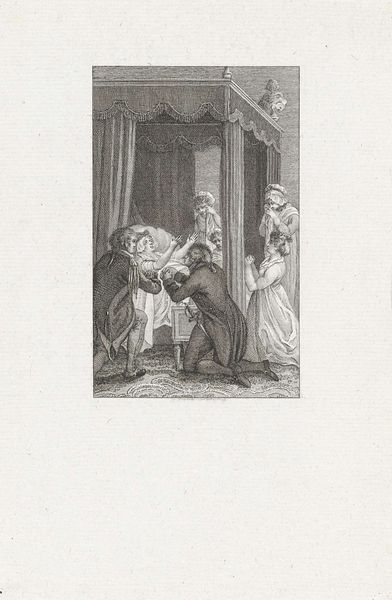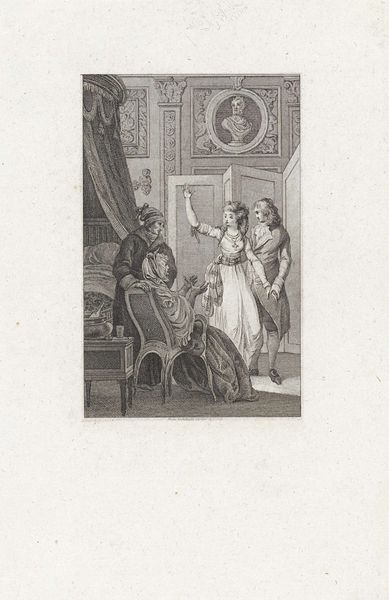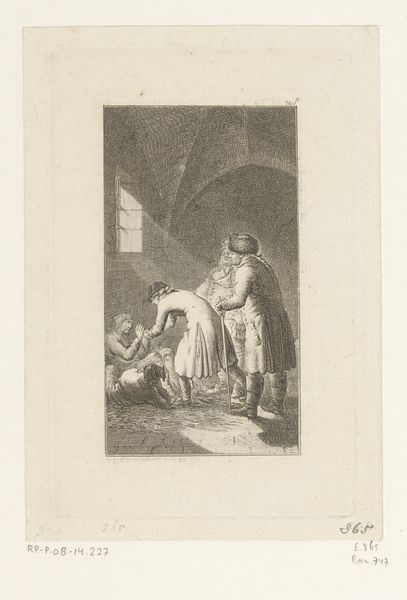
In een cel knielt een man voor een vrouw die haar gezicht afwendt 1778
0:00
0:00
reiniervinkeles
Rijksmuseum
Dimensions: height 207 mm, width 148 mm
Copyright: Rijks Museum: Open Domain
Curator: This is a print entitled "In een cel knielt een man voor een vrouw die haar gezicht afwendt," or "In a cell, a man kneels before a woman who turns her face away," created by Reinier Vinkeles in 1778. It's currently held in the Rijksmuseum. Editor: It feels incredibly theatrical, almost melodramatic. The stark contrast created by the light source and the highly charged postures of the figures… It evokes a sense of immediate conflict. Curator: Yes, Vinkeles really leans into Baroque sensibilities with that drama. The scene plays with gesture in a sophisticated manner. Notice how the man's kneeling and pleading contrasts with the woman’s averted gaze and raised arms. This generates a compelling visual tension, guiding the eye through a dynamic interplay of shapes and light. Editor: Beyond the Baroque influence, what resonates are the political implications of an image showing someone in a cell. Given that 1778 was a time of revolution, I wonder about the history of imprisonment. Who is being detained and why? The narrative context is crucial here, because how else should we interpert this kind of visual vocabulary? Curator: Indeed. As a genre-painting with some history-painting influences, this could potentially refer to political prisoners or some commentary on imprisonment, power and gender roles. Yet, on a formal level, the composition reinforces power dynamics. The man kneeling places him firmly below the woman, who commands the space, though through denial rather than direct engagement. Editor: Which complicates our easy reading of power structures because her averted face makes her a kind of passive figure who lacks true agency in that position. Even the light seems to expose the vulnerabilities in their relative stances rather than empower them. What, finally, do you think Reinier Vinkeles hopes to illustrate to contemporary society? Curator: Precisely. Vinkeles’ expert use of line weight and shadow truly sculpts this scene in such a way that renders those visual paradoxes palpable. It is not a painting, it is just an engraving made from one copper plate: its composition highlights the theatricality of desperation, with subtle signs of despair and the loss of authority. It invites, in fact, close examination of each of the actors in this somber, desperate episode. Editor: Perhaps what Vinkeles presents us here, then, is a stark commentary on human vulnerability when exposed to the ruthless machinery of governance. Regardless of any singular conclusive interpretation, its narrative ambiguity sparks continuous thought, doesn't it? Curator: Undoubtedly. Its genius lies in the layering of gestures, the dramatic tension and how they manage to leave it up to us to interpret and consider, so that we also join this somber setting.
Comments
No comments
Be the first to comment and join the conversation on the ultimate creative platform.
